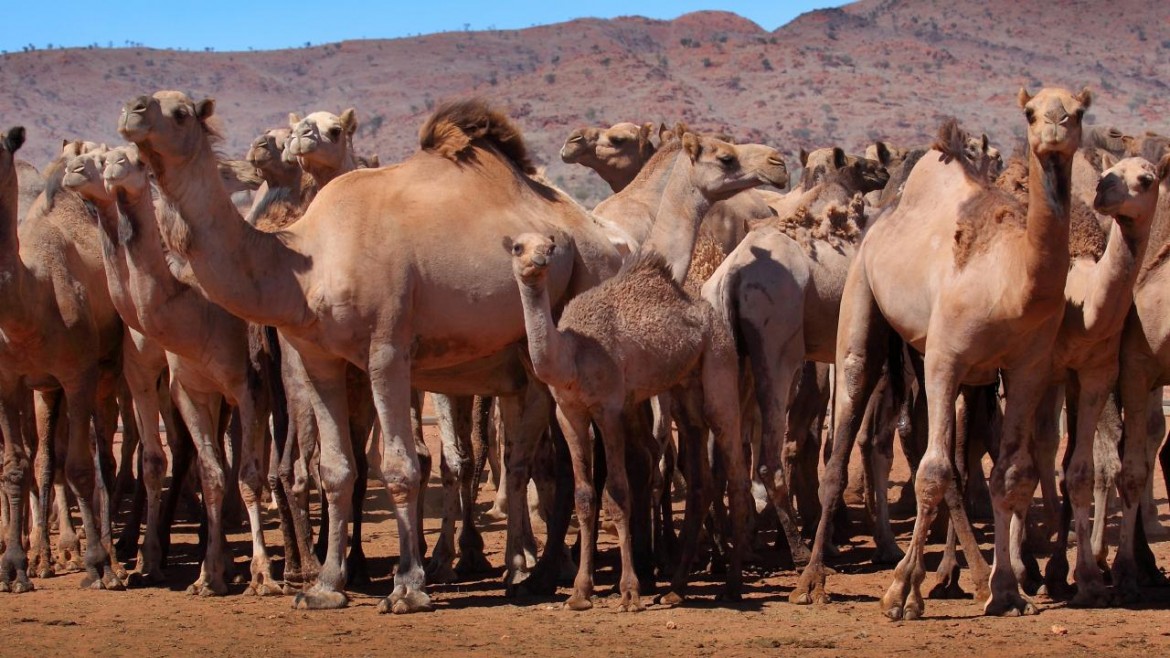Report
Australia plans a massacre of 5,000 camels to spare them a slow death by thirst
The animals are tearing down fences and entering people’s houses, looking for water even in the air conditioners. Last year was one of the hottest years ever recorded in Australia.

In addition to the countless animal deaths and massive deforestation from the fires in Australia — together with the 26 people who have died so far; the latest victim was a firefighter who lost his life Wednesday — there is now yet another nightmare unfolding. Officials announced a campaign to kill 5,000-10,000 wild camels and dromedaries, a plan decided after much hesitation by the authorities of the APY Lands (short for Anangu Pitjantjatjara Yankunytjatjara).
The competition for water, the most precious of all resources (whenever it is scarce), is now pitting a human community that has been the victim of large-scale discrimination, the Australian Aborigines, against an “animal community” so devastated by thirst that they are moving in desperate herds toward human-inhabited areas, in a last-ditch attempt to find water to drink.
The APY Lands are located in a remote part of southern Australia. This is a Local Government Area (LGA) administered by the Aborigines themselves under a 1981 law. The total population is about 2,300 people, belonging to the Pitjantjatjara, Yankunytjatjara and Ngaanyatjarra tribes. The APY local authorities have decided to approve the large-scale culling, explaining that “given ongoing dry conditions and the large camel congregations threatening all of the main APY communities and infrastructure, immediate camel control is needed.”
The animals are tearing down fences and entering people’s houses, looking for water even in the air conditioners. In addition, a spokesperson for South Australia’s Department for Environment and Water (DEW) said that “in some cases dead animals have contaminated important water sources and cultural sites.”
In statements that sounded much like throwing up one’s hands in despair, the general manager of the APY Lands, Richard King, said that this measure of “last resort”—the plan to kill the animals with marksmen firing from helicopters—would cull a number of animals equal to “only 1% of what is currently destroying the fragile Australian fauna and flora.”
And this will not be the end of it, as this first week of slaughter is just the start of a larger attempt to control the populations of feral camels and dromedaries: “It will definitely have an impact and it will provide some breathing space, but this cull will be the first of a few,” King concluded.
In a sad irony, camels are considered sacred by a number of Aboriginal communities. They are not an indigenous species, like so many others which have fallen victim to the fires and which people are trying to save, but were introduced by British colonists in the 19th century. Their population has grown extensively over time, to a likely number of over one million, and experts say this number could double in just a few years. According to the DEW, which gave full approval to the APY authorities’ plan, it has become impossible “to manage the scale and number of camels that congregate in dry conditions.”
There is even a risk that these animals might deplete all of South Australia’s water reserves. Thus, instead of letting them die painfully of thirst, with associated risks for humans as well, killing the animals is being described almost like a euthanasia operation, especially after the APY authorities took care to emphasize that they “will be destroyed [sic] in accordance with the highest standards of animal welfare.” In short, the professional marksmen will aim carefully.
However, one might wonder why they haven’t tried to prevent the disproportionate growth of these non-native animals in the past, when this could have been possible without having to take such drastic measures. The demographic control of wild species is not a new problem, and not one faced by Australia alone. There, culling-based containment plans have been implemented for a number of years, but don’t seem to have been successful.
Meanwhile, from Somaliland came an appeal by Mustafe Cali Deeq, the president of the local Camel Herders’ Association (domestic camels, one should note), calling on the Australians to stop killing the animals and instead return them to the lands where they “originally” came from. He stressed that camels are “very precious” animals. Unfortunately, what he is proposing is not a feasible solution.
Nor is sterilization (which has been practiced successfully on other species and in other contexts), as Massimo Vitturi from LAV explains: “The vaccine currently exists only in an injectable formula, which means that it is necessary to capture each individual animal. Furthermore, the time for achieving a decrease in population numbers is too long, as the issue is considered to be an emergency by the authorities. More bloodless and effective solutions are needed, such as watering troughs far from population centers.”
According to the Australian authorities, it will take many months to overcome the current disaster. Last year was one of the hottest years ever recorded in Australia. According to the Copernicus Climate Change Service, such sad records were also noted in Eastern and Southern Europe and in southern Africa, not to mention in Alaska and parts of the Arctic—all while the global CO2 levels in the atmosphere are still inexorably rising.
Originally published at https://ilmanifesto.it/australia-la-pena-dei-cammelli-condannati-a-morte/ on 2020-01-09
